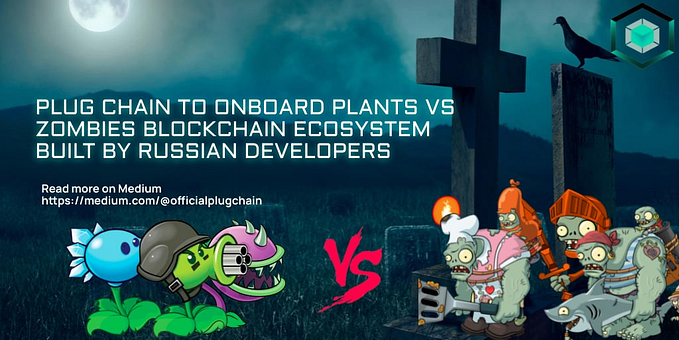Preface: Web3.0 was initially aimed at replacing traditional trust models with decentralized systems and gradually shifted its focus towards achieving product-market fit and expanding user bases. This evolution sparked a profoundly impactful technological revolution, turning Web3 into an unstoppable force.
While the Web3 industry boasts vast developmental opportunities, the pivotal focus ahead lies in establishing a sustainable economic model to ensure the secure operation of foundational infrastructure and to attract billions of new users. The next wave of applications is on the horizon, and the interest from traditional capital markets in Web3 infrastructure continues to soar. These enterprises aim to leverage Web3 technology to reduce costs, explore new revenue streams, and meet the growing demand among users for tokenized assets.
The current economic composition of Web3
To understand the oracle economic model, it’s essential to first analyze the components shaping the Web3 economy. Web3 primarily consists of three technological stacks: blockchain, ecosystem applications, and oracles. For sustainable development of the Web3 economy, each layer of the technological stack must be economically self-sufficient, generating revenue from users or other technological stacks to sustain its operations.
Blockchain
Blockchain serves as the foundational ledger within the economic model, responsible for storing and updating ownership of assets and data. Additionally, it executes the underlying smart contract code for blockchain applications.
On the blockchain, users are required to create transactions within their own ledger. These transactions generate network transaction fees and MEV (Maximal Extractable Value). These fees flow towards miners or validators, serving as rewards for their contributions to maintaining the blockchain’s operations. Transaction fees are paid in a peer-to-peer manner using the native tokens of the blockchain. However, a significant portion of transaction fees and MEV rewards in smart contract-based blockchains come from users of applications within the chain.
Generally, as the ecosystem of blockchain applications or rollups expands, the influx of transaction fees into the blockchain network increases. Consequently, this creates greater economic incentives to ensure the system’s security. Transaction fees are considered a part of the blockchain’s sustainable security budget, especially considering the gradual reduction of block rewards over time.
Ecosystem Applications
Applications are tools that provide specific products and services to Web3 users. Users can utilize these applications to borrow stablecoins from lending markets, purchase NFTs on trading platforms, or acquire insurance from decentralized insurance platforms.
These applications offer products and services, charging corresponding fees to sustain their operations. They engage in various tasks, including protocol development, risk management, and maintaining native token economic mechanisms. Even tokens focused on protocol governance need to consider token economic models and value-capture mechanisms to reduce the risk of governance attacks and ensure protocol security. While some applications are immutable public goods that do not seek value capture, they are relatively scarce. Most applications face operational costs and update protocols in a distributed manner to maintain competitiveness.
The application layer encompasses not only Web3-native applications (dApps) but also hybrid solutions developed by traditional enterprises and institutions (Web2). These solutions might involve optimizing backend business processes using smart contracts, issuing tokenized assets on the blockchain, or enabling customer access to Web3 assets and services.
Oracle
Oracles provide various trust-minimized services to meet the needs for normal operation of applications, services that cannot be solely provided by native blockchains or centralized infrastructures. The main categories of oracle services include enabling bidirectional communication between blockchains and external data/systems, conducting trust-minimized off-chain computations, and facilitating interoperability of cross-chain data and assets.
These services are paid for by applications, and oracles derive revenue from user fees. These fees flow to the network service providers whose responsibility is to furnish services and ensure the security of oracle services. Given the limitations of blockchains, the core value of oracles lies in offering diverse trust-minimized services to applications, such as serverless computing environments, verifiable random number generation, smart contract automation, cross-chain message transmission, proof of reserves, and transaction sequencing.
Typically, oracles play the role of connecting Web2 infrastructures with the Web3 economy. Fees paid by applications and users to oracle networks constitute their security budget, essentially ensuring the security, reliability, and accuracy of the oracle network through economic incentives.
Establishing a sustainable oracle economic model is paramount for the future of Web3.
Oracles have opened up vast application scenarios within the blockchain field. However, to truly realize these scenarios, applications must be capable of accessing external data, conducting trust-minimized off-chain computations, and adopting cross-chain interoperability solutions. To provide developers with these oracle services, it is imperative to establish a sustainable economic mechanism that ensures security and fosters innovation.
PlugChain aims to lead the innovation and adoption of decentralized oracle services in the future. Presently, our focus lies in establishing a sustainable oracle economic model, allowing developers of today and tomorrow to build secure and mainstream Web3 applications. We firmly believe this will be the key to unlocking billions of new users in the future.
PlugChain takes the aggregated cross-chain oracle protocol as the core, integrates the advantages of high performance, high expansion, low gas!
Website: https://plugchain.info
Twitter: https://twitter.com/Plugchainclub @Plugchainclub
Telegram: https://t.me/plugchain
Discord: https://discord.gg/GdpPzUt89E
Youtube: https://www.youtube.com/channel/UCW4s0YFA7y1qYis1eW3Wcog
Medium: https://officialplugchain.medium.com/
NFT Market:https://very5.com/
GitHub:https://github.com/oracleNetworkProtocol/plugchain
Official Email:officialplugchain@gmail.com
#PlugChain #Pando #Very5 #Gxswap #Oracle #prc20 #web3










